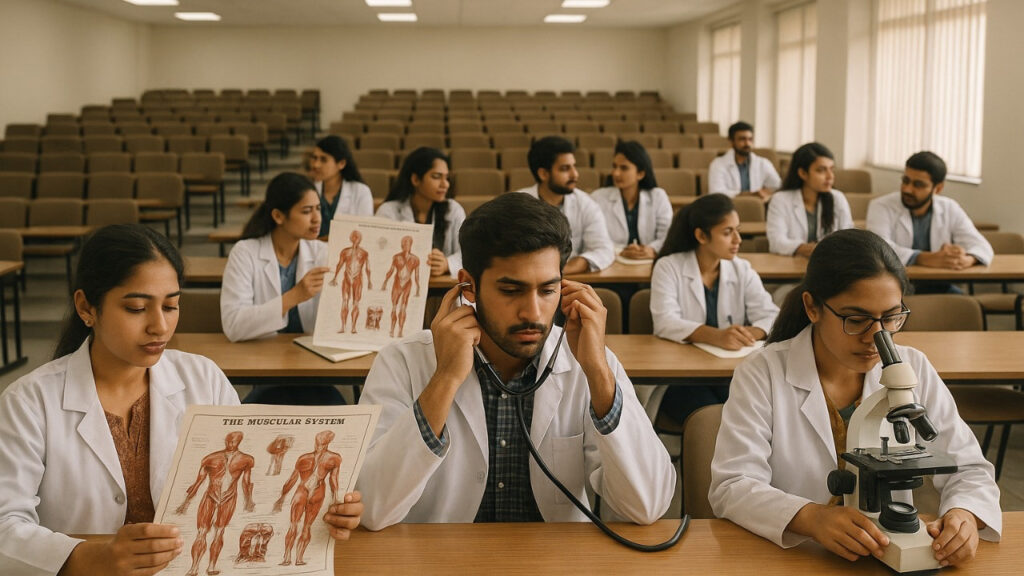Despite 39% Rise in MBBS Seats Since 2020, Over 2,800 Remain Vacant in 2024

Despite 39% Rise in MBBS Seats Since 2020, Over 2,800 Remain Vacant in 2024
India has witnessed a significant increase in undergraduate medical seats over the last four years, yet thousands of MBBS seats continue to go unfilled each academic cycle.
According to data presented in the Lok Sabha on August 1 by Anupriya Patel, Minister of State for Health and Family Welfare, the number of MBBS seats rose by 39%, from 83,275 in 2020–21 to 1,15,900 in 2024–25. However, despite this capacity expansion, 2,849 MBBS seats remain vacant in 2024–25.
This pattern of underutilisation has persisted for several years:
- In 2021–22, 2,012 seats went unfilled.
- In 2022–23, the number spiked to 4,146 — the highest in recent years.
- In 2023–24, the figure slightly reduced to 2,959.
- In 2024–25, it stands at 2,849 vacant seats.
The statistics, sourced from the National Medical Commission (NMC), exclude AIIMS and JIPMER institutions and were presented in response to a parliamentary query by TDP MP Putta Mahesh Kumar.
Key Reasons for Persistent Vacancies
Despite efforts to expand access, several structural and systemic challenges continue to hinder full seat utilisation:
1. High Cost of Private Medical Colleges
Government medical colleges are in high demand due to their affordability. However, many students who do not secure a government seat find private college fees prohibitively expensive, often leading to vacant seats.
2. Complex Counselling Processes
State-level counselling procedures can be complicated and lengthy. Last-minute student withdrawals and indecision disrupt allocation, resulting in some seats being left vacant despite demand.
3. Lack of Guidance in Marginalised Areas
Students from rural and underserved regions often lack adequate support or counselling during the admission process, reducing their chances of successfully navigating the system.
4. Preference for Established Institutions
New or lesser-known colleges, despite meeting infrastructure and faculty standards, struggle to attract students. Aspirants typically prioritise more reputed or better-ranked institutions.
Government Measures and Infrastructure Expansion
To address shortages in healthcare personnel, the government has introduced multiple initiatives:
- 157 new medical colleges have been approved across the country, with 131 already operational, many under a centrally sponsored scheme in underserved regions.
- In 2023, the NMC introduced Minimum Standard Requirement Regulations, mandating that all new colleges meet clear benchmarks for infrastructure, faculty, and clinical facilities before being approved.
- Older medical institutions are being upgraded to increase both MBBS and postgraduate seat capacity.
While the government’s push to expand India’s medical education infrastructure is evident, the persistent underutilisation of MBBS seats highlights deeper issues, including affordability, access, awareness, and institutional quality perception. Bridging these gaps will be essential to ensure that every seat translates into a future healthcare professional.












